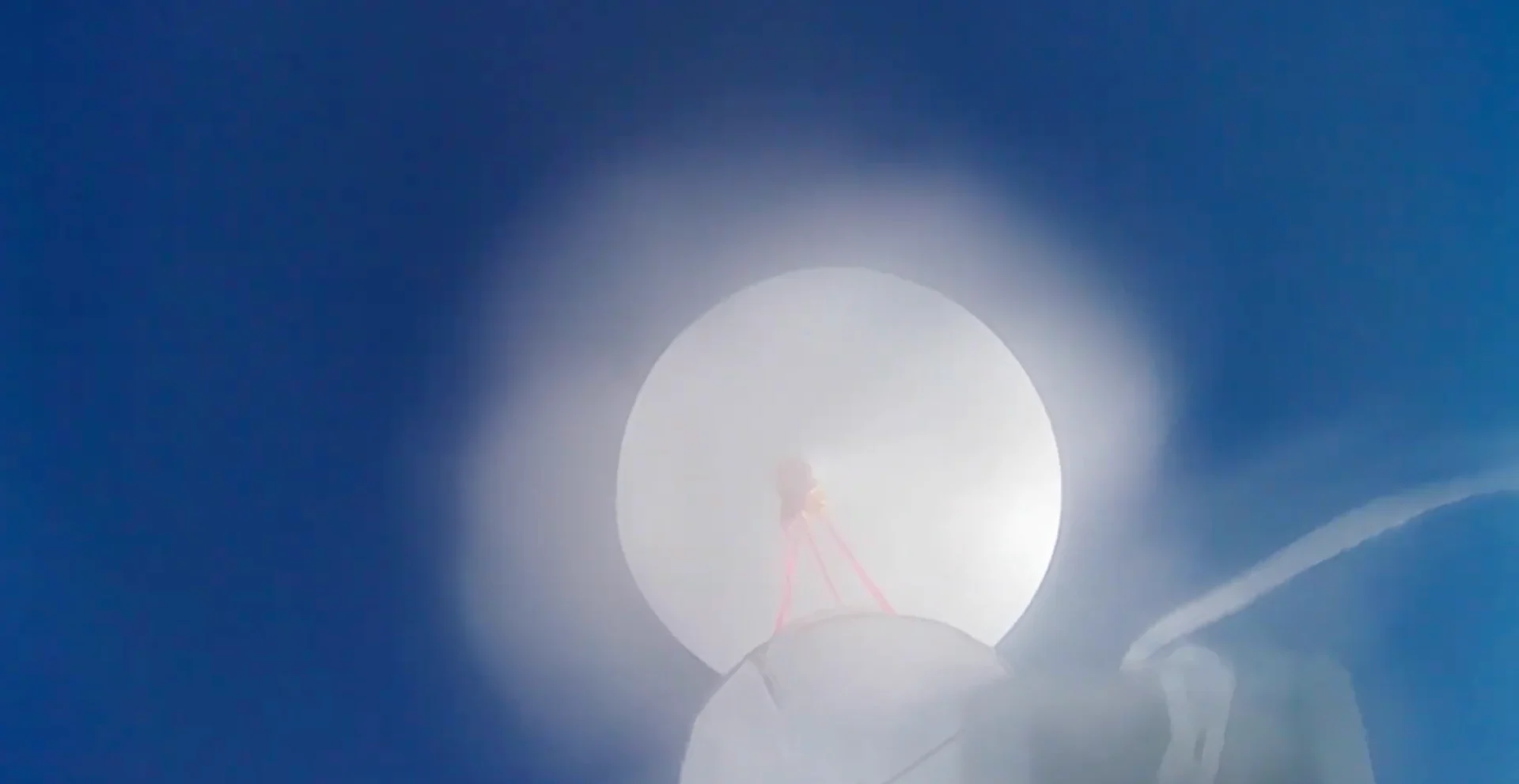
'Tower of Light' will give us a rare view of next week's eclipse
Not within the path of totality? You won't want to miss this livestream during the April 8th solar eclipse!
Whether the skies are clear or cloudy on the day of the total solar eclipse won't really matter to retired physicist David Hunter. That’s because he and his team of volunteers have spent years building what he calls a 'Tower of Light' to be launched within the path of totality in Florenceville-Bristol, N.B., on eclipse day on April 8.
The solar telescope will be carried by a helium balloon and launched 30 kilometres into the stratosphere. The payload will carry six cameras on board, with one taking continuous video and another that will be dynamically aimed at the Sun.
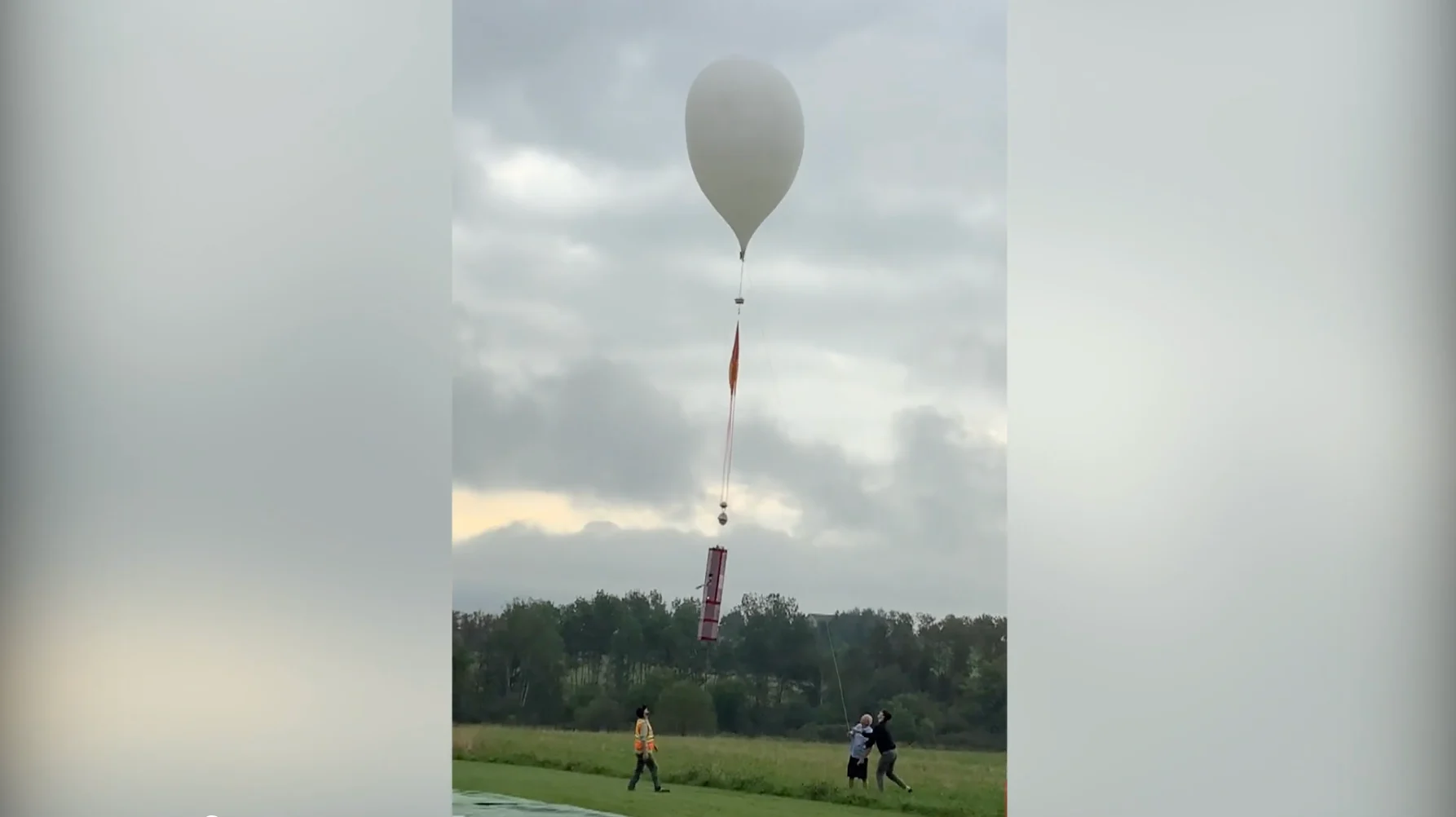
The camera-equipped balloon will capture images of the eclipse at an altitude of 30 kilometres. (David Hunter)
DON'T MISS: How to use a cereal box to safely view the solar eclipse
The system has a WiFi network, with the main computer being a Raspberry Pi 4, with five computers in total.
Hunter gave The Weather Network a first hand look at his set up in his kitchen, where he does most of his programming.
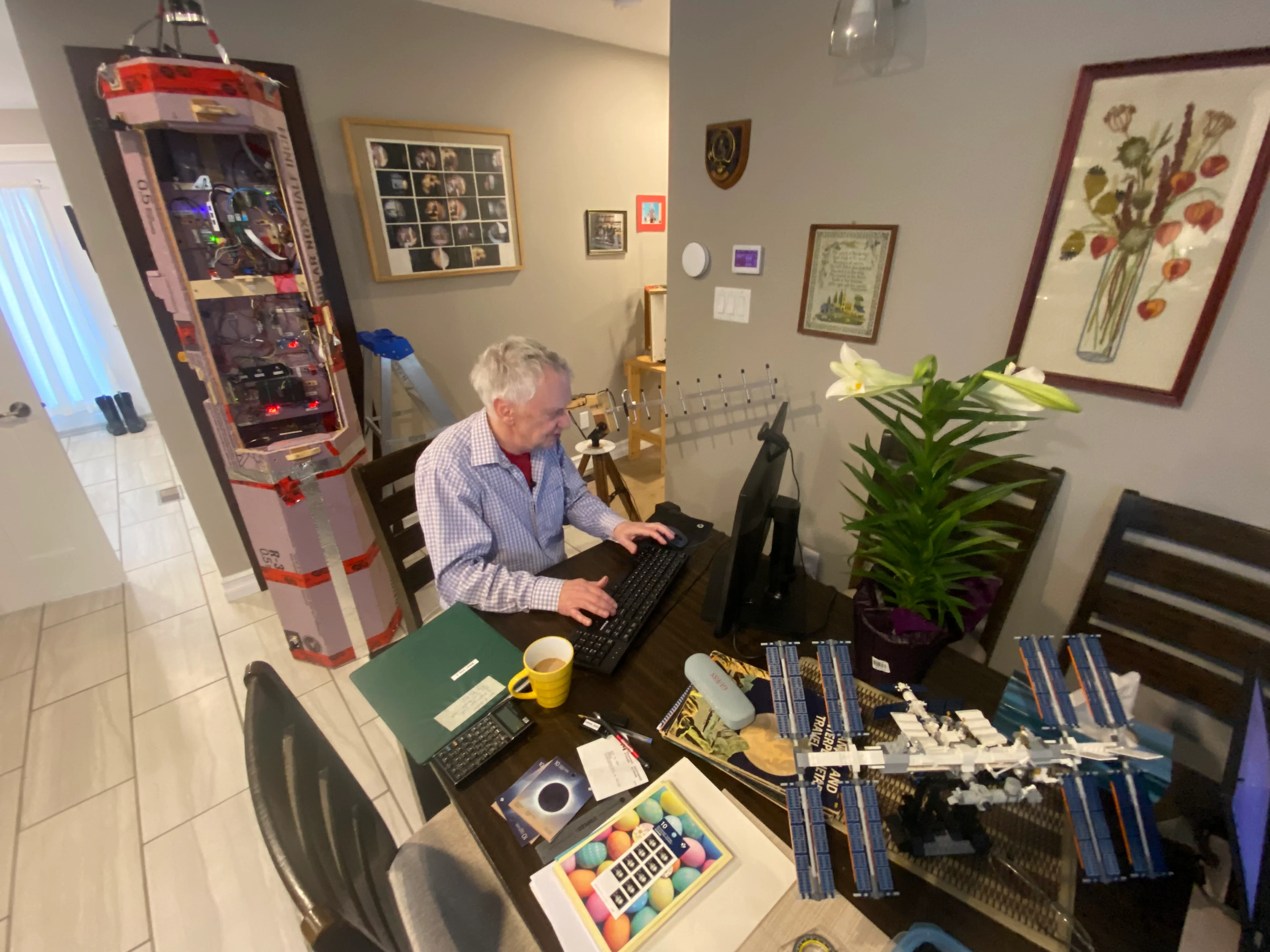
Retired physicist David Hunter and his team spent years building the 'Tower of Light'. (The Weather Network)
The agile eye camera that sits atop the rig has three motors in it. One to run each axis of the gimbal along with a motor to bring the solar filter in or out of the camera.
“So no matter how much this spins, the camera’s going to stay in the same place?” I ask him. “Uh, to a first approximation…not perfectly,” Hunter chuckles in response.

The cameras are set up to capture a panoramic view of the eclipse. (The Weather Network)
DON'T MISS: Everything you need to know for April's spectacular and rare solar eclipse
It’s taken years of prep work by volunteers and a budget of about $50,000 from sponsors.
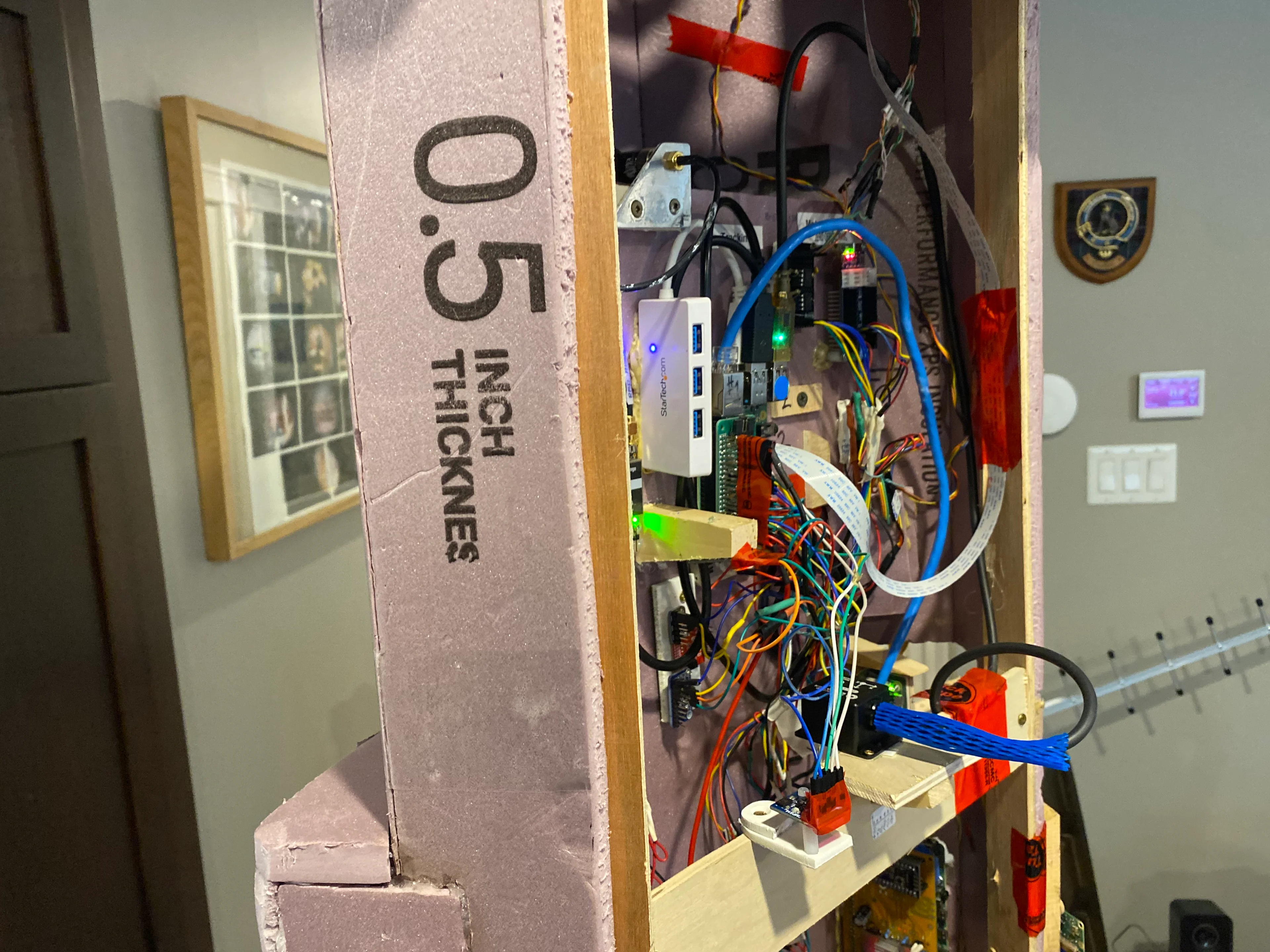
Images captured by the computers and cameras will be radioed down to the ground live as the eclipse happens. (The Weather Network)
The team conducted four successful test launches ahead of the big day, but Hunter says it will ultimately all come down to the weather next Monday.
“The weather is our number one concern. Although we’re trying to get above the clouds, if it were particularly windy, it would cause us real problems. Another concern is precipitation. If it’s raining, it could add extra weight to the balloon which would not be good," says Hunter.
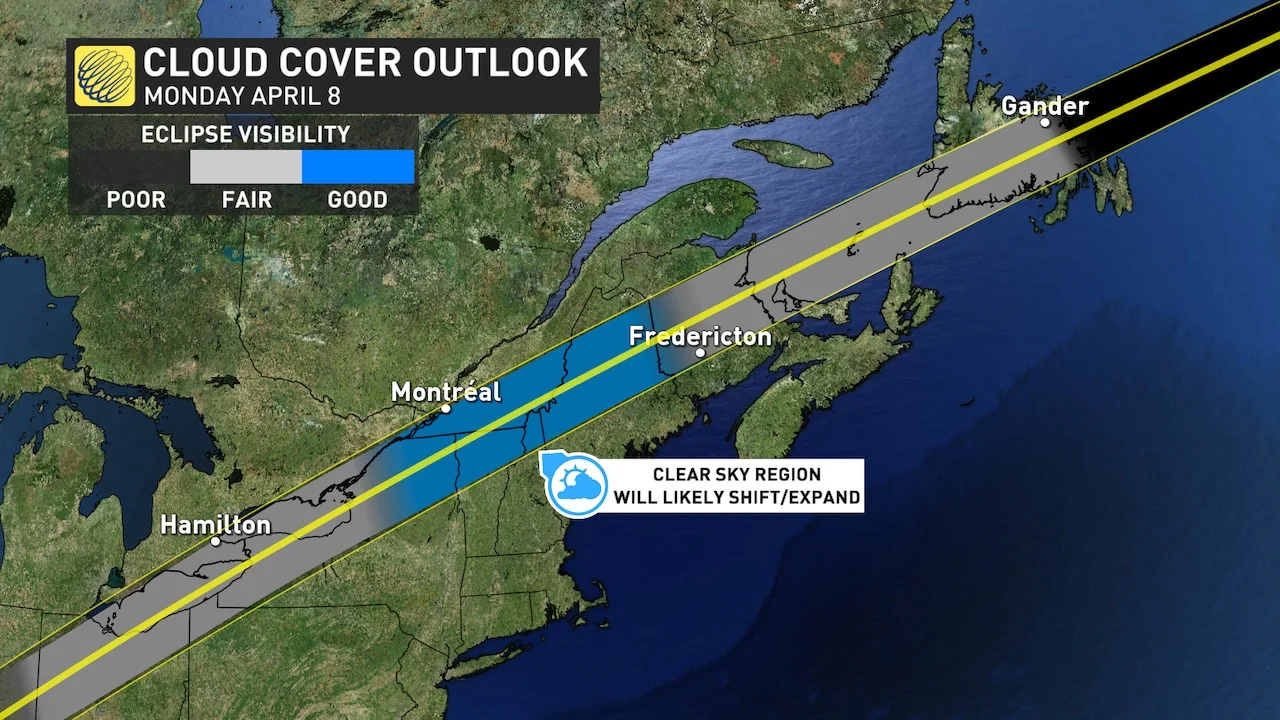
Cloud cover forecast for April 8th as of April 1. (The Weather Network)
The solar eclipse balloon project is the only citizen-led project of its kind outside of NASA. The Weather Network will be broadcasting the stream as it happens, and can be accessed on Youtube.










